Sure, Sonia Warfel’s new show is sexy, but it is satirical and poignant too.
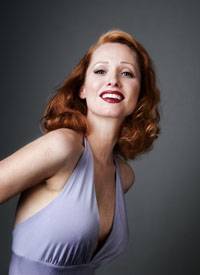 The fiery-haired Warfel, who goes by the stage name Ginger Brûlée, will present “Voulez-vous Brûlée?” to an adults-only audience at the Canopy Club on Thursday, March 17. Warfel describes the evening-length piece as “an extravaganza of glamour and vice where neo-burlesque meets MGM musical in a decadent dance party.
The fiery-haired Warfel, who goes by the stage name Ginger Brûlée, will present “Voulez-vous Brûlée?” to an adults-only audience at the Canopy Club on Thursday, March 17. Warfel describes the evening-length piece as “an extravaganza of glamour and vice where neo-burlesque meets MGM musical in a decadent dance party.
But Warfel’s creative process hasn’t been all sequins and feathers; she has had to defend the production’s adult content to members of the University of Illinois dance community, and to members of the broader Champaign-Urbana community as well. Warfel’s dancers have signed Rights of Refusal to indicate their voluntary compliance with her choreographic requests.
In the U.S., the largest burlesque communities can be found on the East and West Coasts, with the highest concentrations in New York City, Seattle, Los Angeles and San Francisco. In Illinois, Chicago is the place to go to see burlesque shows; the second annual Windy City Burlesque Festival will be held March 18 and 19 at Chicago’s Greenhouse Theatre. In Champaign-Urbana, Warfel is helping to chart new territory.
Warfel explained that her process stemmed from a curiosity about the mid-1990s resurgence of burlesque, a movement referred to as neo-burlesque.
“I assumed that [the resurgence] had to do with the obvious – nostalgia – and also with the fact that we are completely inundated with nude images,” Warfel said.
But she found that burlesque isn’t just about eye-candy. Performers often gain confidence and a strong sense of empowerment from their participation in burlesque shows – a fact to which Warfel’s dancers can attest.
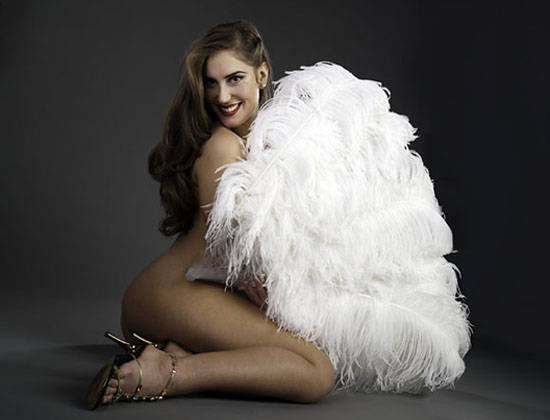
“I think all too often women are taught that this type of expression is immoral and degrading…Having worked on ‘Voulez-vous Brûlée?’, I have come to realize that this is not the case,” said dancer Erin Sutkay. “If anything, burlesque can be a celebration of womanhood and can even further encourage strength and confidence. By choosing to take on such a potentially vulnerable role, you begin to better define your character and truly appreciate yourself.”
Warfel said that her greatest inspiration for her show was Julie Atlas-Muz, a burlesque performer in New York whose work is “really, really far out.”
“I was envious of her courage,” Warfel said. “I was wondering, ‘What am I so afraid of?’”
So she started researching. After watching many shows and talking to burlesque performers, Warfel started imagining what her own burlesque persona might be, and upon what social issues that persona might comment.
“I decided that the real social position that I find myself in straddles the dual roles of housewife and mother, and dance artist/scholar,” Warfel said. “This show is me trying to reconcile those two aspects of my own personality, and making broader comment on the woman’s role in modern society.”
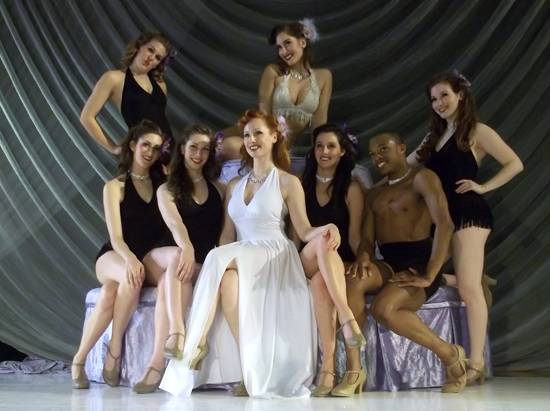
And she does so with a twist; Warfel introduces dancer Aaron White, a homosexual black man dressed in drag, as her seventh chorus girl.
“Putting Aaron in was really important to me,” Warfel said. “The chorus girls fall into the nonthreatening, doll-like vision of feminine performance, and I put [Aaron] in to underline that assumption. People don’t see that the chorus girls are all identical and homogenous – that they are eye candy…that they aren’t human – until they are confronted by this beautiful black man.”
The process has been equally empowering for White, he explained. One day in rehearsal, Warfel asked her dancers to write negative things people have said about them in the past on the dry erase board.
“My thing was that people think that because I’m effeminate, I’m somehow less of a dude,” White said.
But thanks to his “Voulez-vous Brûlée?” experience, White has learned to embrace his femininity.
“The hardest part of this process for me was uncovering myself – and facing the truths about myself that I don’t necessarily do on a daily basis – and doing that through dance,” he said. “I am now really excited because I have never performed as a woman…When you are a male dancer onstage, you need to be masculine. Sonia is giving me the opportunity to mess with those lines and I’m going to run with it.”
Warfel said that the rehearsal process has been “totally fun.”
“I directed the dancers to indulge in frivolity and camp, and stereotype, and to push those caricatures really far,” she explained. “I find [those aspects to be] hilarious – I hope that my audience loves it and can come along on a satirical journey.”
The Canopy Club performance of “Voulez-vous Brûlée?” originated as Warfel’s MFA thesis for the University of Illinois at Urbana-Champaign (UIUC) Department of Dance. But after Warfel showed her work-in-progress to the UIUC Dance faculty in early December 2010, members expressed concern for their students’ safety.
“After thoughtful consideration, it was decided that the combination of adult material, alcohol and a late-night, off-campus location potentially creates a safety and security risk for the undergraduate students involved in this performance,” said UIUC Department of Dance Head Jan Erkert. “For that reason, Sonia’s thesis work will be performed at the Krannert Center for the Performing Arts on March 5. The thesis performance is open to the public.”
Warfel’s Canopy Club show, as a result, is being produced independently – at a personal expense of about $5,000-$7,000. Even if Sonia and her husband, Brûlée Co-Producer and Production Designer Andy Warfel, sell out the venue, the revenue from ticket sales will cover less than 40 percent of their final production costs.
“As we’re paying for this project ourselves, we’ve been calling in favors from all over the country…and even beyond,” Andy said.
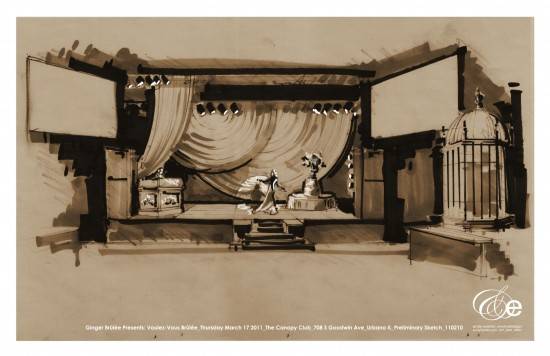
The couple is trying to design and produce the show using things that are borrowed, bartered, donated or rented to avoid the cost of creating custom items for one-time use, Andy explained. “Voulez-vous Brûlée?” will feature a dance floor from one of Andy’s corporate projects in New York, and a fourteen-foot-tall steel Victorian birdcage that he built for a local event a few years ago.
“This is great for the budget,” Andy said, “but it requires quite a bit of additional footwork.”
And the extra footwork does not stop there; Sonia had to take steps to ensure that her piece would not have legal repercussions, resulting in the signing of legal contracts, or Rights of Refusal, by each of her dancers.
“The conversations I had with the legal department were fatiguing, but they ultimately clarified what we are doing,” she said. “We are doing everything I hoped we would do…we are just having to jump through more hoops than normal. If I was doing a traditional postmodern dance, I wouldn’t have to do nearly as much.”
But Warfel is not without the support of the UIUC dance faculty in her artistic endeavors.
“I was impressed after going through all of that, many of the faculty stuck with me and helped me fight for the right to do the work, so I appreciate that,” she said.
Members of the broader Champaign-Urbana have had more mixed reactions; Warfel recently received anonymous hate mail from an alleged concerned parent of a child in Champaign Unit 4, the school district in which she directs an afterschool arts program.
“I am generating a tremendous amount of controversy – much more than I expected,” Warfel said. “I have received anonymous hate mail – someone basically saying that I have no business being an educator because I am doing this kind of work.”
Her biggest challenge, Warfel explained, has been picking herself back up every time someone has tried to knock her down.
Fellow third-year dance MFA candidate Joseph Hutto said that he can empathize with Warfel’s situation; he received “similar boldly expressed negative feedback” about his choreographic content and point of view when he presented a site-specific work in 2009.
“I sat down with Sonia after that feedback session and just talked to her,” Hutto explained. “I said, ‘This looks like history repeating itself. You have to decide whether or not the struggle is worth it, and realize that if you have done your research, [people] will recognize your point of view eventually…but it will take time and it will be a struggle. You have to decide whether or not you want to take their feedback and apply it, or toss it.’”
Hutto said that in his case, the negative feedback was received after the performance had occurred. Warfel has had to endure it in the middle to late stages of her creative process.
“I can’t imagine not letting that kind of feedback affect you at all…I’m sure it has been a hindrance to Sonia’s propulsion and the drive that she started this project out with,” Hutto said. “But she is still incredibly passionate about it…She is frickin’ amazing for pressing forward and putting up with the backlash and negativity the way she has.”
Warfel has looked to feminist literature to defend her point of view to the community.
“It has become really clear to me that there is a very clear divide between the second wave of feminism and the third – the second wave being my mother’s and my professors’ generation,” she said.
Warfel continued to explain that the “third wavers” have a quarrel with the second generation, citing it as being too focused on a white, middle class, hetero-normative experience of femininity.
“The experience of being a woman is much broader than that,” she said. “There are many different cultures, roles in society and means of sexual expression associated with womanhood…and the third wave is more inclusive of those categories.”
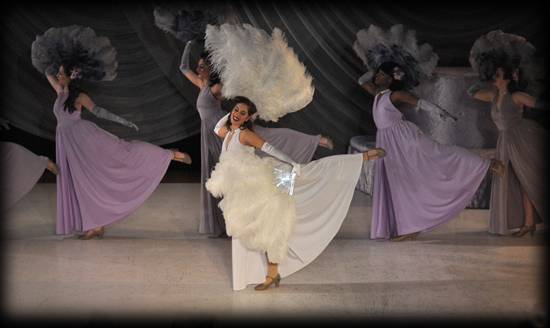
In “Voulez-vous Brûlée?”, Warfel challenges her audience to “accept that the creative and the procreative, or, in the words of Simone de Beauvoir, the productive and the reproductive, can be held in one female body simultaneously,” and she does so unapologetically. But her choices are not without careful consideration.
“I would say I have periodically really questioned myself and my choices,” Warfel said, “but I keep coming back to this idea that it is good work if I love it…If my work excites me as an artist and as a creator in the studio, it’s got to be good.”
Decide for yourself on March 17.
More information is available online at www.soniawarfel.com. Tickets are available at www.canopyclub.com.
Photos by Eric Baddour.








